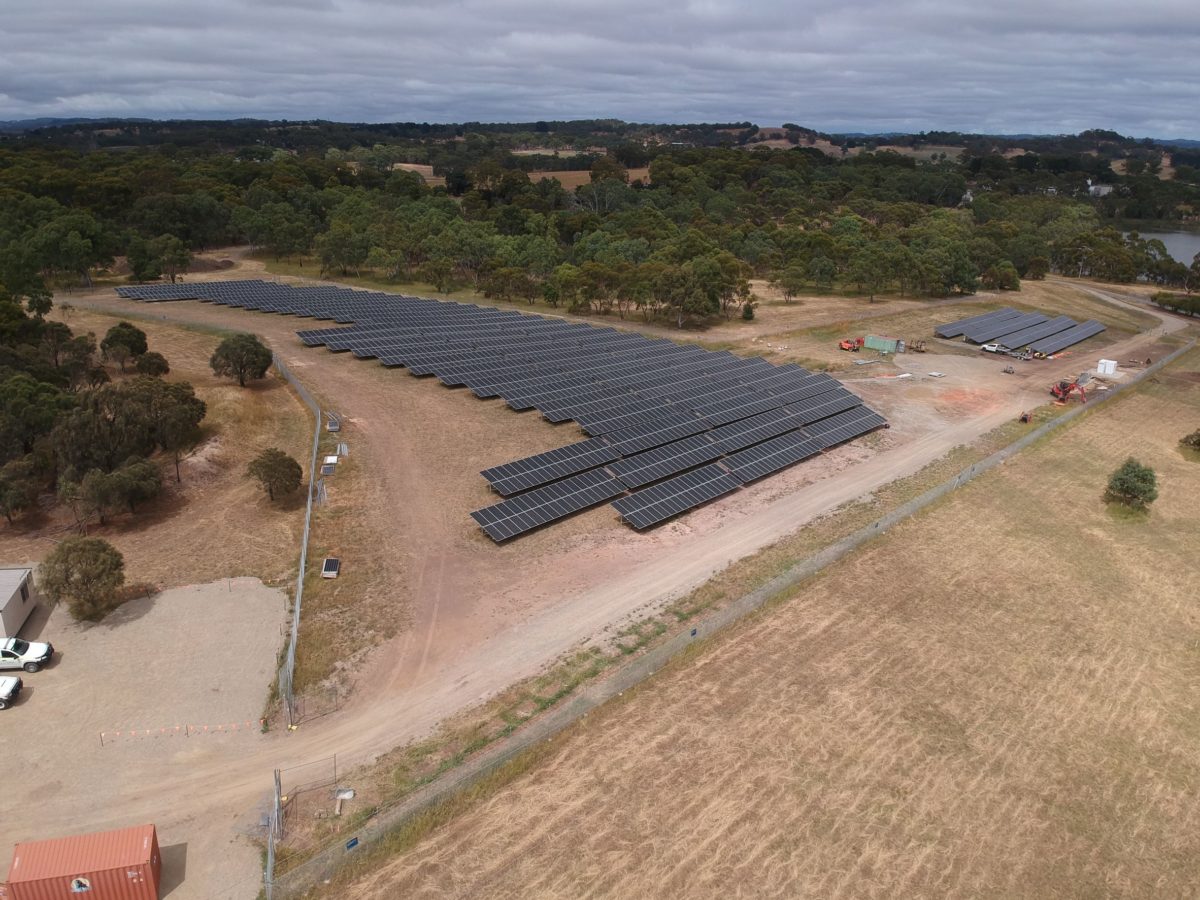SA Water’s Zero Cost Energy Future plan to generate around 70% of the electricity it needs to treat water and pump it around the state is peaking, with the Summit water storage and treatment plant at Balhannah, one of the largest such plants in the Adelaide Hills, now powered by 2,900 solar PV panels coupled with 528 kWh of onsite battery storage.
The Summit plant is close to the last of SA Water sites to be solar energised as part of the state-owned utility’s $300 million plan to “offset SA Water’s electricity needs, help lower costs and reduce emissions”, as David Speirs, South Australia’s Minister for Environment and Water described it back in May.
Nicola Murphy, Senior Manager of the ground-breaking initiative that has been internally designed and planned by SA Water, welcomes viewers in the video below to a “glimpse” of the future “where the need to provide reliable water services to customers is perfectly balanced with the need to protect the environment”.
The Zero Cost Energy Future project is not only about installing a total of 368,000 solar panels on SA Water sites across the state, but also implements intelligent demand scheduling and energy efficiency measures, and seeks to surf the National Electricity Market (NEM) — buying electricity when prices are lowest, and selling excess solar stored in a fleet of battery devices back to the NEM, to further offset costs.
In the 2019-20 financial year, the utility’s operating energy expenses reached $86 million, and now, with the project to slash costs nearing completion, Murphy says, “We’re excited to finalise the connection of all our 30-plus locations to the national grid ahead of the warmer months” of the Australian spring and summer, when she says “the real benefits of solar power” will come to the fore.
The huge task of solar powering SA Water has been achieved in less than two years, although the project’s intentions were announced and tenders called for in late 2017/early 2018, when it also soft-pedalled off the mark with a pilot project for 100 kW of floating PV at the state’s Happy Valley reservoir.
In February 2019, Adelaide-headquartered contractor Enerven was awarded a $304 million framework agreement contract to deliver the landmark solar + storage program.
That first floatovoltaic installation suggested there would be nothing cookie cutter about the SA Water solar-powered sites. And indeed, some are wastewater treatment plants by the sea, such as Christies Beach with its 3.5 MW ground-mounted array; others are purely pumping, such as the Geranium Plains pump station, one of four channelling drinking water from the River Murray along 358 kilometres of pipeline to the Upper Spencer Gulf, and which now has 14 GWh per annum of clean energy at its disposal; and then there’s the Adelaide Desalination Plant, which will draw its huge fully operating energy requirement from 35,000 solar panels on east-west trackers, generating 21 GWh of electricity per annum — with much of that energy being sold into the NEM when higher rainfall patterns reduce demand for the processed water.
Integrated battery energy storage with PV, says Murphy, will consistently “allow us to capture and use solar energy as required, and better manage the volatile and often fluctuating prices of the energy market.
An award-winning achievement and methodology
One of the largest renewable energy projects in the Australian water industry, Zero Cost Energy Future won this year’s Australian Construction Achievement Award, with judges commenting that the project sets a significant precedent for both the construction and water industries, developing standards and a general methodology for delivering projects at this scale.
They said SA Water had provided “the entire water industry with a pathway towards zero-cost energy and materially reducing its carbon footprint, which is a significant societal outcome given it is a carbon intensive industry”.
The project is expected to reduce SA Water’s emissions by around 89,000 tonnes per annum, which is the equivalent of planting seven million trees, or removing more than 32,000 cars powered by internal combustion engines from the road.
On the announcement of the Summit plant energisation, Murphy proudly said, “This initiative was designed by our people and shows South Australians leading the way with the smarts and skills to integrate renewable energy across existing plants, pump stations and other land holdings.”
Summit itself, she said, is now “ready to capture the spring sun rays”, and “the 1,766 kilowatt hours of solar generated by these panels is roughly the equivalent of powering 290 South Aussie houses each year”.
This content is protected by copyright and may not be reused. If you want to cooperate with us and would like to reuse some of our content, please contact: editors@pv-magazine.com.









1 comment
By submitting this form you agree to pv magazine using your data for the purposes of publishing your comment.
Your personal data will only be disclosed or otherwise transmitted to third parties for the purposes of spam filtering or if this is necessary for technical maintenance of the website. Any other transfer to third parties will not take place unless this is justified on the basis of applicable data protection regulations or if pv magazine is legally obliged to do so.
You may revoke this consent at any time with effect for the future, in which case your personal data will be deleted immediately. Otherwise, your data will be deleted if pv magazine has processed your request or the purpose of data storage is fulfilled.
Further information on data privacy can be found in our Data Protection Policy.